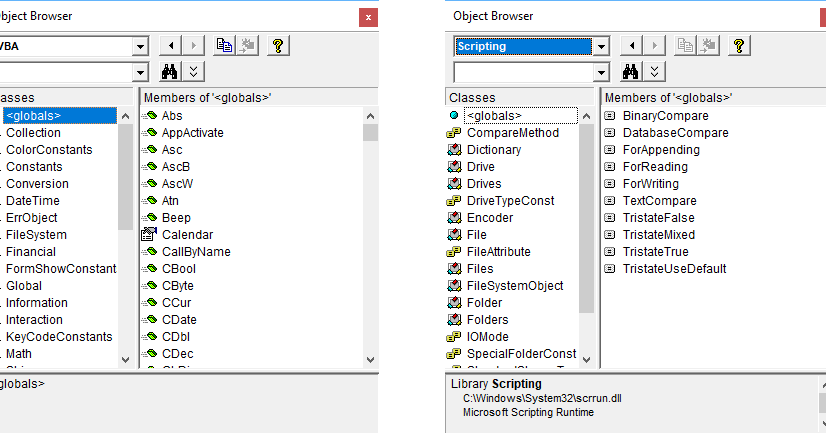
Working with objects is a crucial part of Visual Basic for Applications (VBA) programming, allowing you to create, manipulate, and interact with various elements within your applications. Understanding the different types of objects available in VBA is essential for efficient and effective programming. In this article, we'll delve into six key types of objects you should know when working with VBA.
The importance of objects in VBA cannot be overstated. They represent real-world entities or concepts within your program, enabling you to write code that is both intuitive and powerful. By mastering the different types of objects, you can create applications that are more robust, flexible, and easier to maintain.

1. Workbook Object
The Workbook object is one of the most commonly used objects in VBA, representing an Excel workbook. It contains all the worksheets, charts, and other elements that make up the workbook. You can use the Workbook object to perform tasks such as opening, closing, saving, and manipulating workbooks.
Dim wb As Workbook
Set wb = Workbooks.Open("C:\Example.xlsx")
2. Worksheet Object
The Worksheet object represents a single worksheet within a workbook. It provides access to the data, formatting, and other properties of the worksheet. You can use the Worksheet object to perform tasks such as selecting cells, formatting data, and inserting charts.
Dim ws As Worksheet
Set ws = ThisWorkbook.Worksheets("Sheet1")
3. Range Object
The Range object represents a group of cells within a worksheet. It's a versatile object that allows you to perform a wide range of tasks, from simple data manipulation to complex formatting and calculations.
Dim rng As Range
Set rng = ThisWorkbook.Worksheets("Sheet1").Range("A1:C10")
4. ChartObject Object
The ChartObject object represents a chart within a worksheet. It provides access to the chart's properties, such as its title, axes, and data series. You can use the ChartObject object to create and customize charts in your workbook.
Dim co As ChartObject
Set co = ThisWorkbook.Worksheets("Sheet1").ChartObjects("Chart 1")
5. Shape Object
The Shape object represents a drawing object, such as a rectangle, circle, or arrow, within a worksheet. It provides access to the shape's properties, such as its position, size, and formatting. You can use the Shape object to create and manipulate drawing objects in your workbook.
Dim sh As Shape
Set sh = ThisWorkbook.Worksheets("Sheet1").Shapes("Rectangle 1")
6. UserForm Object
The UserForm object represents a custom dialog box or form within your VBA application. It provides access to the form's properties, such as its controls, layout, and behavior. You can use the UserForm object to create custom interfaces for your users.
Dim uf As UserForm
Set uf = UserForms.Add
These six types of objects are fundamental to VBA programming, and understanding how to work with them will help you create more powerful and effective applications.




By mastering these six types of objects, you'll be well on your way to becoming a proficient VBA programmer.
FAQs
What is the difference between a Workbook and a Worksheet object?
+A Workbook object represents an entire Excel workbook, while a Worksheet object represents a single worksheet within a workbook.
How do I create a new ChartObject in VBA?
+You can create a new ChartObject using the `ChartObjects.Add` method, like this: `Set co = ThisWorkbook.Worksheets("Sheet1").ChartObjects.Add`
What is the purpose of the UserForm object in VBA?
+The UserForm object represents a custom dialog box or form within your VBA application, allowing you to create custom interfaces for your users.
We hope this article has helped you understand the six types of objects in VBA. If you have any further questions or need more information, please don't hesitate to ask.











